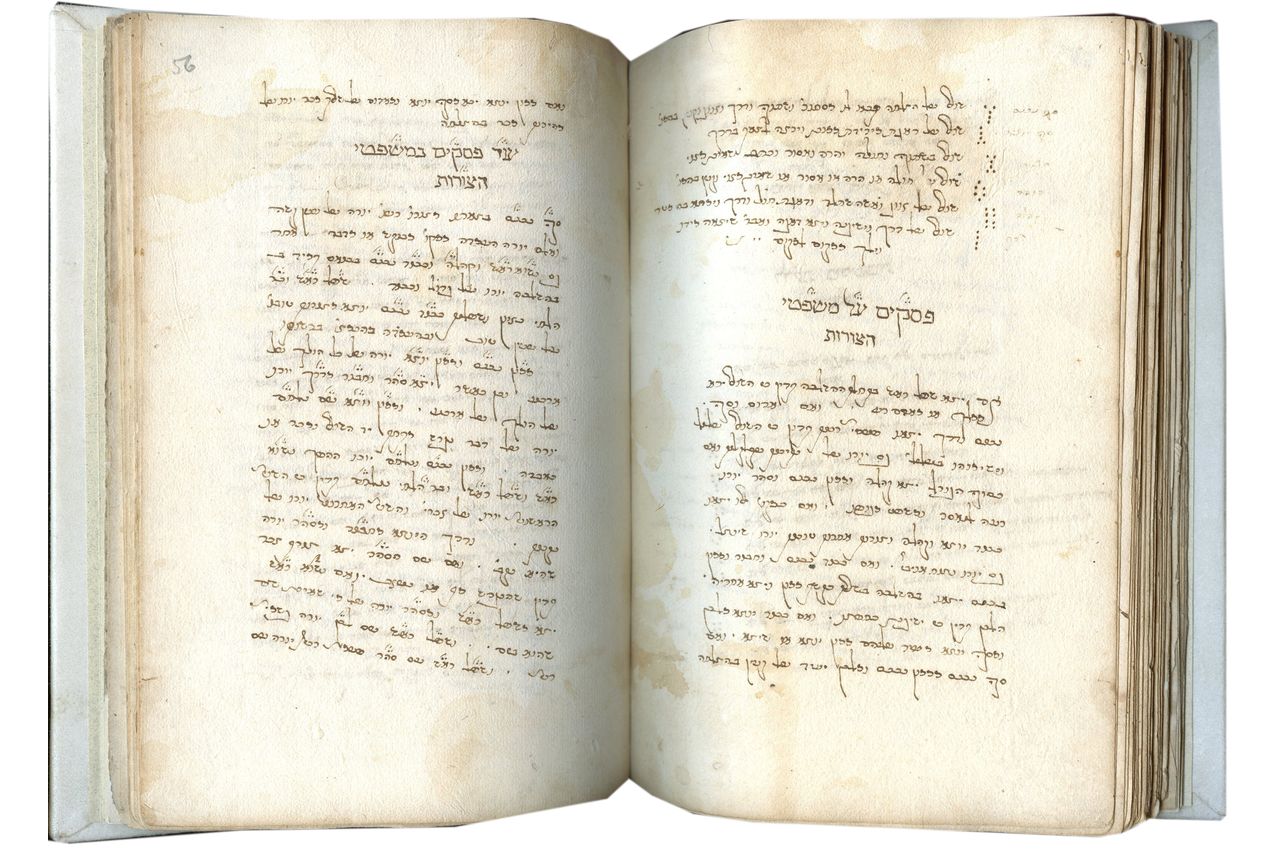
(fols vi-xxxix verso) The scribe uses a type of minuscule characteristic of the mid second half of the twelfth century. A superscript bar over the ‘c’ in ‘scs’ denotes ‘sanctus’. A crossbar through the ascender of ‘h’ in ‘heteȝæ’ denotes ‘heretoȝæ’ A superscript bar over ‘m’ denotes ‘men’. A superscript bar over the ‘t’ in ‘driht’ denotes ‘drihten’. ‘cw’ with a superscript bar denotes ‘cwæð’. ‘accents’ are used abundantly on both long and short vowels.Ībbreviation for ‘n’ or ‘m’ is marked by a superscript bar, usually straight but occasionally hooked. ‘descenders’ turn to the left, except ‘p’. ‘s’ is Caroline, but sometimes it descends below the line, especially when doubled and before ‘t’. A diagonal hair-line is attached to the base of Caroline and insular forms of ‘g’. Insular ‘g’ is used for the spirant and caroline ‘g’ for the stop. ‘d’ is rounded, of the same size and shape as ‘ð’. (fols 1-170) Probably in one hand, but there is some change in style after fols 64, 154. On linguistic features of the two main English hands see a recent discussion in Dance 2011. However, other hands seem to be at work for example on fols x, 64v and 170r. One hand works on fols vi-xxxix and another fols 1-170 (see also Ker 1957, p. Two main scribes copy the majority of the manuscript. Seven small pricks appear on the top margin to guide the ruling of the vertical four bounding lines of the columns. 7 mm apart to guide line ruling still visible, some have been cut prior to binding. Small pricks appear on the external margin ca. Double bounding lines on both side of the column 7 mm apart. Ruling in pencil across the columns, but within the two external bounding lines. Four small pricks appear on the top and lower margin to guide the ruling of the vertical four bounding lines.

Small pricks appear on the external and internal margins ca. Ruling in pencil within the two external bounding lines. Small pricks appear on the external margins ca. Fols 13-20 seem to have been pricked internally, bear the gutter. The first three and last three ruling lines are ruled accross the frame. Four small pricks, which are still occasionally visible, appear on the top and lower margin to guide the ruling of the vertical bounding line. 8 mm apart to guide line ruling still visible, some have been cut prior to binding. Four small pricks appear on the top and lower margin to guide the ruling of the vertical four bounding lines of the columns, which are respectively 70, 9, 70 mm in width. 6 mm apart to guide line ruling still visible, some have been cut prior to binding. Small pricks appear on internal margin, near the gutter, and external margins ca. xi r-xxxix v: ruled space 240 × 67 mm.ĭouble columns. Small pricks appear on the top and lower margin to guide the ruling of the vertical bounding lines of the frame. No visible pricking on external margins, but the ruled lines are 9 mm apart within the main frame.

Ruling in brown crayon on both sides of the folio. Medieval mermen act as heroic entities of the Medieval merfolk species, consequently forcing Medieval mermaids to forfeit their agency and serve as sexual entities of the Medieval merfolk species.Fols. As images of mermen appear, mermaids embrace a more decorative role with depictions of them primarily combing their hair and looking into mirrors while neglecting most of their previous actions. These mermen appear primarily clothed in cloth garments or metal armor with head coverings and weaponry.

Medieval manuscript images begin depicting mermen in the 1400s, with the mermen performing acts like wielding weaponry, playing musical instruments, and raising phallic objects over their heads.
.jpg)
These early images show mermaids with short or partially concealed hair and sagging breasts. In Medieval manuscript images from 1200 to 1400, mermaids appear as supernatural female archetypes performing a variety of acts like standing idle, playing musical instruments, embodying sirens to lure sailors, and using weaponry.


 0 kommentar(er)
0 kommentar(er)
